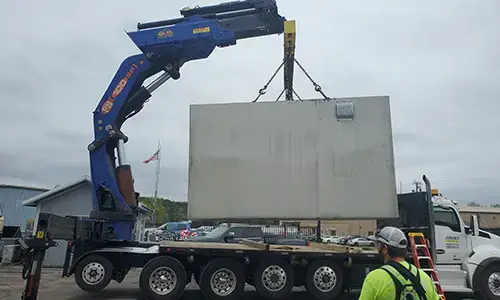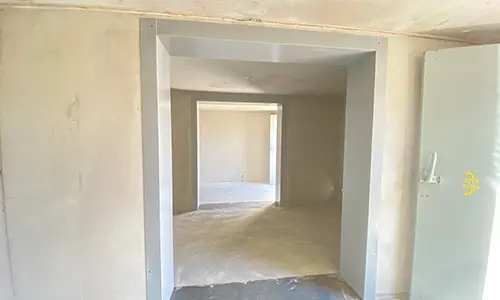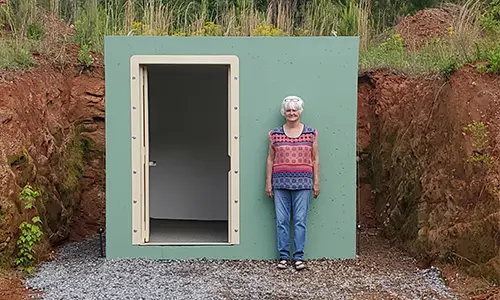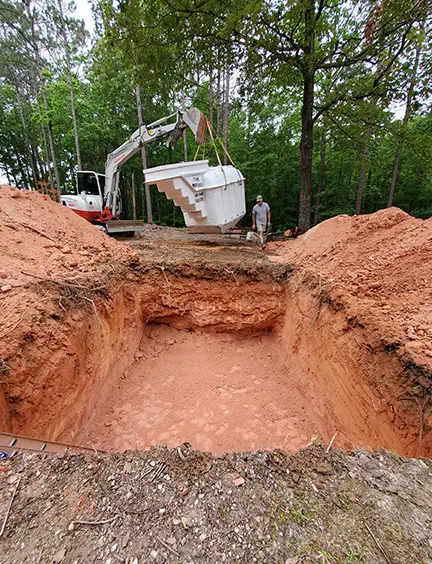State and Local Storm Shelter Grants in Alabama: What’s Available?


Introduction
When tornado season approaches in Alabama, the stakes couldn’t be higher. The state sits in a high-risk tornado zone, experiencing some of the most powerful and unpredictable storms in the country. Unlike in other regions where tornadoes are relatively rare, Alabama’s history is filled with devastating twisters, some reaching EF4 and EF5 intensity, capable of leveling entire neighborhoods in minutes. In moments of crisis, a storm shelter isn’t just an added precaution—it’s a lifesaving necessity, providing a secure space to ride out the storm when evacuation isn’t an option.
But the reality is that installing a storm shelter in Alabama comes with a hefty price tag, often ranging from $3,000 to $10,000 or more, depending on the size, type, and installation complexity. The good news? Financial assistance is available through state and local storm shelter grant programs, helping homeowners, communities, and businesses afford the protection they need without bearing the full financial burden.
However, navigating the funding process can be challenging, with different eligibility requirements and application steps. What grants are available? Who qualifies? How do you apply? This guide breaks down the most accessible storm shelter grants in Alabama, offering step-by-step instructions to help you secure funding and protect your loved ones.
Why Storm Shelters Are Critical in Alabama
The State’s Extreme Tornado Risk
Alabama is no stranger to tornadoes. With its location in Dixie Alley—a region notorious for violent, long-track tornadoes—the state faces some of the most destructive storms in the U.S. Unlike Tornado Alley, where storms typically strike in the spring and summer, Alabama experiences deadly tornadoes year-round, often intensified by moist Gulf air and unpredictable weather patterns.
Consider the April 27, 2011, Super Outbreak, one of the deadliest tornado events in history. On that tragic day, more than 60 tornadoes tore through Alabama, including multiple EF4 and EF5 twisters, leaving entire communities in ruins.
The outbreak claimed over 250 lives, injured thousands, and caused billions of dollars in damage. Entire neighborhoods were reduced to rubble in mere minutes, reinforcing the life-or-death necessity of having a storm shelter.
The message is clear: Alabama homeowners need reliable storm shelters. Investing in one could mean the difference between life and death when the next tornado strikes.
If you're unsure whether an above-ground or underground storm shelter is best for your home, check out this detailed comparison: Above-Ground vs. Underground Storm Shelters.
The High Cost of Safety
Despite the urgent need, many families hesitate to invest in a storm shelter due to high installation costs. Depending on the size, type, and installation method, shelters can range from $3,000 to over $10,000, making them financially out of reach for many homeowners. Additionally, some properties may require specialized installation, further increasing expenses.
That’s why Alabama provides storm shelter grants and rebate programs, offering much-needed financial relief to help residents afford safe, FEMA-approved shelters. These programs bridge the gap, making storm protection more accessible to homeowners, schools, and communities without overwhelming financial strain.
Available Storm Shelter Grants in Alabama
Alabama’s storm shelter grants come from a mix of federal, state, and local programs, each with its own eligibility requirements and funding cycles. Understanding the available options is crucial for homeowners, as some programs provide direct financial aid, while others focus on community-wide shelter solutions. Here’s a breakdown of the most common funding sources and how you can apply.
1. FEMA’s Hazard Mitigation Grant Program (HMGP)
The FEMA Hazard Mitigation Grant Program (HMGP) is one of the most widely used funding sources for storm shelters. It provides financial assistance after a federally declared disaster, allowing homeowners to apply for shelter installation rebates through their local government agencies. The funding helps cover a portion of storm shelter installation costs, making it more affordable for residents in high-risk areas.
Who Qualifies?
- Homeowners in eligible counties affected by federally declared disasters.
- Residents applying through participating local governments.
How to Apply:
- Contact your local Emergency Management Agency (EMA) to check for active FEMA grant cycles.
- Submit an application with required documentation, including proof of homeownership and shelter installation estimates.
2. Alabama’s Safer Places Program
This state-funded initiative primarily focuses on creating community-wide safe spaces, such as public storm shelters in schools, fire stations, and local government buildings. However, some municipalities extend funding to private homeowners, making it worth exploring for those seeking assistance.
Who Qualifies?
- Local governments, schools, and organizations seeking to establish public storm shelters.
- Some homeowners, depending on local funding availability.
How to Apply:
- Contact your county EMA office for details on local funding availability and potential homeowner grants.
For a complete breakdown of available grants, eligibility, and tips on securing funding, read this in-depth guide: Alabama Storm Shelter Grants Guide.
3. Local Government Storm Shelter Grants & Rebates
Many Alabama counties and cities offer independent storm shelter grant programs, often in partnership with FEMA and state agencies. These programs vary in funding amounts and eligibility, but some of the most well-known initiatives include:
- Jefferson County Storm Shelter Rebate Program
- Madison County EMA Grant Program
- Tuscaloosa County Safe Room Initiative
Who Qualifies?
- Homeowners living in eligible counties.
- Applicants who meet local grant program requirements.
How to Apply:
- Visit your county’s EMA website or contact local government offices for application instructions and deadlines.
4. Nonprofit and Community Assistance Programs
In addition to government-funded grants, some nonprofit organizations and community groups offer financial assistance for storm shelters, especially for:
- Low-income families struggling with the high cost of shelter installation.
- Elderly residents who need safe, accessible storm shelters.
- High-risk communities in tornado-prone areas.
Organizations such as The American Red Cross and local disaster relief foundations occasionally provide funding or low-interest loans to help residents afford storm shelter installation. It’s always worth checking with local nonprofits and community organizations to see if additional financial aid is available.
How to Apply for a Storm Shelter Grant in Alabama
Applying for storm shelter funding may seem overwhelming, but breaking it down into clear, manageable steps can make the process much easier. By preparing in advance and understanding common challenges, you can improve your chances of securing financial assistance for a safe and FEMA-approved storm shelter.
Step-by-Step Application Guide
Research Available Grants – Start by checking with your local Emergency Management Agency (EMA) or county government website to see which storm shelter grants are currently accepting applications. Since funding availability changes, staying up to date is crucial.
Verify Eligibility – Each grant program has its own specific requirements. Some focus on federally declared disaster areas, while others are income-based or location-specific. Make sure you meet all qualifications before applying.
Gather Required Documents – Prepare all necessary paperwork in advance, which may include:
- Proof of homeownership (deed, mortgage statement, or property tax records).
- Contractor estimates for the storm shelter installation, ensuring compliance with FEMA standards.
- Site plans (if required) to confirm proper placement of the shelter.
- Personal identification and proof of residency in the grant’s eligible area.
Submit Your Application – Depending on the program, applications may be submitted online, by mail, or through your local EMA office. Be sure to double-check submission deadlines and required attachments to avoid delays.
Follow Up & Wait for Approval – Grant reviews can take weeks or even months, so be patient and maintain regular communication with program administrators. If additional information is requested, respond promptly to keep your application moving forward.
Common Challenges & How to Overcome Them
Limited Funding: Many grant programs operate on a first-come, first-served basis, meaning funds can run out quickly. Apply as soon as possible to increase your chances of approval.
Complex Application Processes: Navigating government paperwork can be confusing. If you’re unsure about any requirements, don’t hesitate to contact your local EMA office for assistance—they can clarify eligibility details and help streamline the process.
For more guidance on securing storm shelter funding, explore this in-depth resource: Alabama Storm Shelter Grants Guide.
Final Thoughts: Prioritizing Safety Through Storm Shelter Grants
Alabama’s tornado risk isn’t just a possibility—it’s a reality. With the state experiencing some of the most devastating storms in the country, investing in a storm shelter isn’t just a precaution—it’s a lifesaving necessity. However, the high cost of installation often discourages families from taking this critical step. That’s why state and local grant programs exist—to bridge the gap and make these life-saving shelters more accessible to those who need them most.
If you’ve been considering a storm shelter, don’t wait until the next severe weather alert. Start your research today—check with your local EMA, explore available grants, and take the necessary steps to protect your home and loved ones before the next storm arrives.
For a real-life look at how storm shelters save lives, read this powerful story: Dale County Tornado: Lake Martin Storm Shelters in Alabama.
Take the Next Step
- Know someone in Alabama who could benefit from this information? Share this guide and help them find funding for their own storm shelter.
- Bookmark your local EMA website and stay updated on new grant opportunities—funding cycles change, and early applications increase your chances of approval.
By taking action now, you’re not just securing a storm shelter—you’re investing in peace of mind and ensuring your family has a safe place when disaster strikes.




